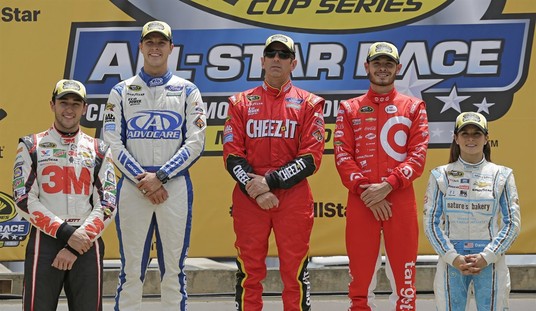Back in July, Stephen Kruiser mentioned his experiences with Amazon’s Cloud-based music app, which I began experimenting with right around then as well, but quickly ran into a snag. Most of the music I had ripped over the years was in Windows Media Audio, and the Amazon Cloud player only accepts MP3s and the iTunes-oriented m4a formats.
Recently though, I began to wonder if somebody made batch processing software that could automatically copy the whole hulking lot of WMAs I had already ripped over the years into MP3s. Naturally, there are dozens of choices available online; this piece of shareware came recommended via a decent review, so what the heck. I created a new directory on my hard drive for all the MP3-ed versions of WMA versions of CD versions of classic albums I already had ripped, and then let the computer do its thing.
Something like ten or 11 hours later, during which time I was blogging, went to the gym, went to sleep, and then woke up, it was done (I think it smoked one of Mark Block’s cigarettes afterwards). Then it was time to upload them to the Cloud. That only took another four or five hours, but then my initial 200 or so albums were now in Cloud city.
The Amazon Cloud isn’t perfect; I wish there was more control over album art images and organizing the data once it’s online. But the idea of all of my music being available in my computer browser, on my Android, and in my car is a powerful one.
Ripping all of these tunes to CD, I couldn’t help but think back to my father’s enormous collection of big band records and began to understand better the powerful feeling of nostalgia they conjured up for him. Recorded music is inherently nostalgic; each recording is fixed to a moment in time when it was completed and released to the public. Or in some cases re-released — many of the CDs I was burning to my hard drive came from that first initial rush in the mid-1980s when the CD debuted.
We take the ‘80s for granted, but the compact disc was released during a time that in its own way, was as revolutionary as the birth of the Web a decade later, at least for pop culture. In rapid succession in the early 1980s, cable TV reached critical mass and took off, MTV was born, digital synthesizers started becoming affordable to musicians, well-off musicians could purchase the Fairlight, which could both sample new sounds, and had astonishing presets (just ask Jan Hammer, Peter Gabriel and Kate Bush), and the compact disc was introduced. All in the space of about three or four years. Whoosh! Welcome to 1985, MTV, Miami Vice and the ‘80s as we know them.
But it took time to get the back catalogs of many musicians into CD form. You kids might not believe this, given that Sam Goody’s, Tower Records and Borders have all bit the dust in recent years, but back in the ’80s, when going online meant phone modems, Compuserve and BBSs, there were once boutique CD dealers. Back when I was living in New Jersey, shortly after I bought my first CD player around 1984 or ’85, I have fond memories of driving out to this really hip CD store in Medford, which had imported CDs of albums not yet available otherwise in the US on compact disc (such as the double CD-imported-from-England version of George Harrison’s mega-opus All Things Must Pass, or Mike Oldfield’s Tubular Bells). You sort of felt like you were touching the future a little — because you were.
At some point in the late ‘80s, I remember driving past and seeing the store boarded up; by then, CDs were officially ubiquitous. Today, it’s the CD itself whose days are increasingly numbered — particularly in my house. But with each CD I popped into the computer to re-digitize, I could recall where I was in life when I bought it, or if I had seen the band live, or at least videos of that band’s best or most iconic moments, such as the Beatles’ rooftop concert, as Let It Be’s ones and zeros were transferred onto my hard drive. Or read a great Rolling Stone, Musician or Guitar World interview with the artist – or heck, learned how to play his hit song on guitar.
For my dad in the 1970s, as the postwar, pre-rock pop culture laid in ruins, the nostalgia must have been similarly powerful – particularly the connections to WWII and the swank of the postwar era. The idea that a basement full of LPs would fit into a hundred-gig hard drive – which could then be uploaded to a global communications network and then listened to anywhere, including in the car, the den, on a portable phone or flat information device the size of a TV dinner would have seemed like Clarke’s Third Law to my dad. And yet we take it all for granted.










Join the conversation as a VIP Member